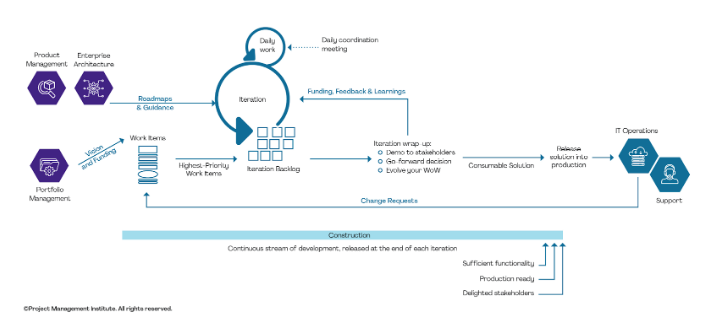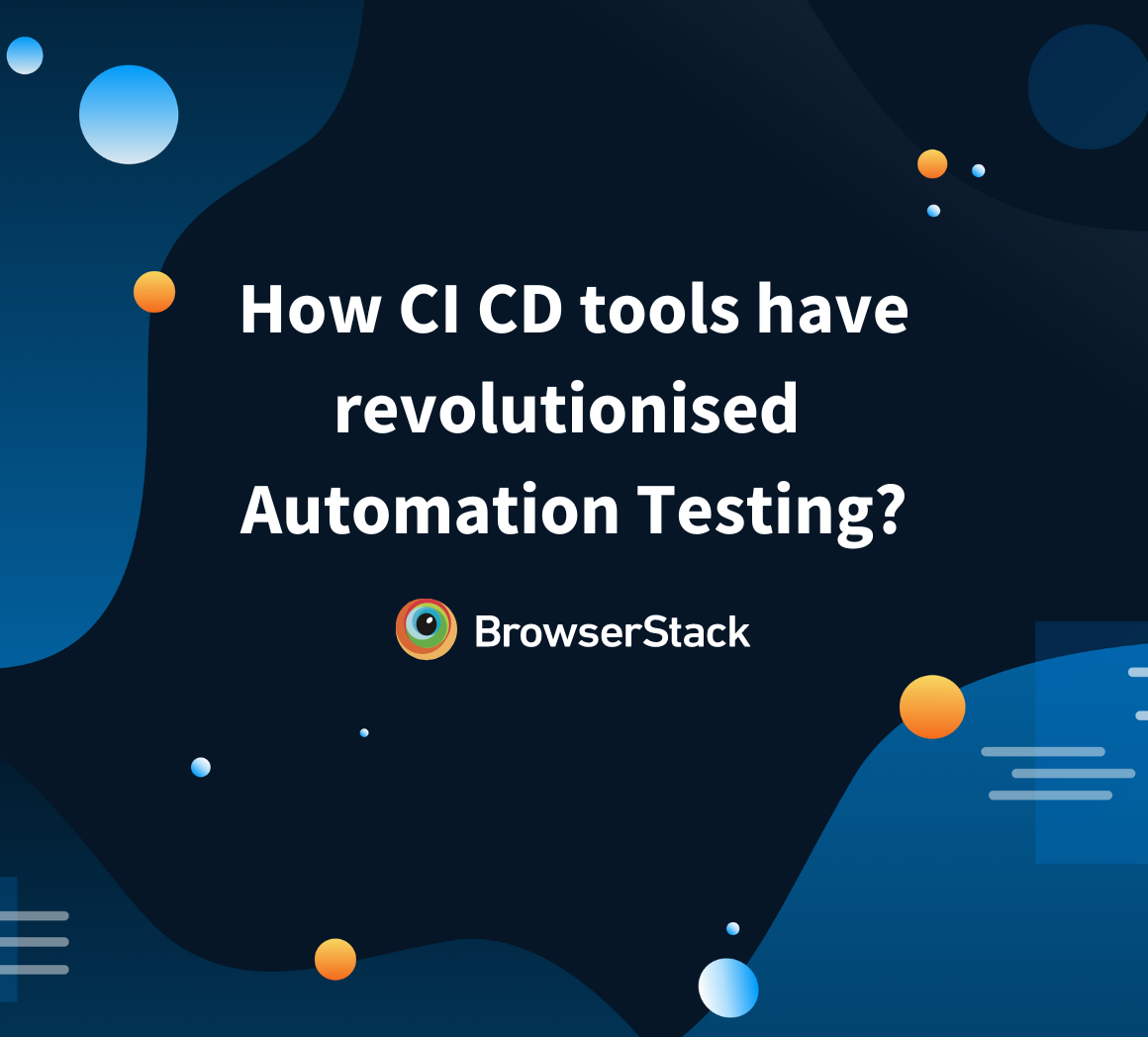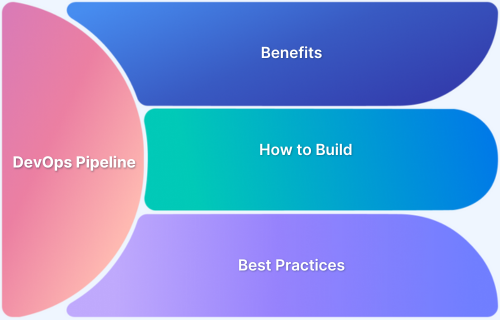What does continuous delivery mean in agile?
By Sourojit Das, Community Contributor - February 24, 2023
Agile continuous delivery combines the agility of iterative development with the automation of deployment pipelines. It enables teams to deliver high-quality software faster, with reduced risk and greater alignment to customer needs.
Overview
1. What Continuous Delivery Means in Agile
- CD = automatically building, testing, and deploying code to production in small, frequent increments.
- Extends Agile principles of iterative delivery and early feedback.
- Ensures code is always release-ready, reducing manual steps and delays.
- Supports automated unit, integration, functional, API, and end-to-end tests.
2. How Agile and DevOps Enable Continuous Delivery
- Agile → short sprints, iterative development, customer feedback loops.
- DevOps → collaboration between development, QA, and operations.
- CI/CD → bridges Agile and DevOps, ensuring faster, reliable deployments.
- Together, they remove silos, automate processes, and increase software stability.
3. Challenges and Resolutions When Adopting CD in Agile
- Incomplete stories → solved using feature toggles for release-readiness.
- Snapshot vs release builds → friction with tools like Maven; requires adjusting pipelines.
- Deployability focus → teams must validate builds in production-like environments, not just dev setups.
- Requires cultural shift and closer collaboration with operations.
4. Benefits of Continuous Delivery in Agile Projects
- Lowers delivery risk with smaller, incremental releases.
- Improves product quality via automation and faster defect detection.
- Speeds up time-to-market by removing bottlenecks.
- Reduces costs by automating testing and deployment.
- Enhances customer satisfaction with continuous feedback and improvements.
- Creates happier, less fatigued development teams.
This article explains agile continuous delivery, its definition, relation to DevOps, adoption challenges, lifecycle integration, and key benefits for modern software teams.
- Defining the terms
- Continuous Delivery vs Traditional Agile
- From Agile to DevOps to Continuous Delivery
- 5 Ways to Adopt Agile and DevOps and Create a Continuous Delivery Culture
- DAD Life Cycle – Continuous Delivery: Agile
- When to Integrate Continuous Delivery in Agile
- Benefits of integrating Continuous Delivery with Agile
Defining the terms
Continuous Delivery (CD) is a method of software development that takes code modifications, tests them in a realistic environment, and then automatically deploys them to production.
Continuous delivery and continuous integration (CI/CD) are crucial components of modern software development because they enable rapid release cycles and immediate developer feedback. This is a crucial prerequisite for agile software development and DevOps work procedures.
Continuous Delivery enables developers to automate not only unit tests, but also integration tests, functional tests, API tests, security tests, and full end-to-end tests, in order to check numerous parts of a new version prior to deployment. Before publishing a version to production, these tests enable engineers to properly assess upgrades and identify any potential problems.
Must Read : How to implement a CI/CD Pipeline?
Agile software development is an approach that anticipates the requirement for flexibility in software projects and makes delivering software to clients easier and more feasible.
Agile software development emphasises iterative development and the delivery of tiny components or modifications as opposed to whole applications. This prompted numerous organisations to undergo a cultural transformation. Today, agile development is the norm, whereas waterfall development practices, such as lengthy release cycles and “big bang” deployments, are essentially obsolete.
The benefits of agile include the ability to help teams in changing conditions while maintaining a focus on producing business value. Due to automated testing and timely feedback, agile development approaches have greatly cut time to market and increased the quality of software products.
The DevOps organisation was born from the culture of collaboration that agile fostered. It may be considered dated to discuss “agile.” But all DevOps practices embody agile development principles. One could say that DevOps is the modern organisation’s practical execution of agile software development.
Follow-Up Read : Agile Development Methodologies: An Essential Guide
Continuous Delivery vs Traditional Agile
Traditional Agile methods and Continuous delivery have a number of friction points which are discussed below.
- Incomplete Stories in Iterations : The need that the codebase not contain incomplete stories or bug patches at the conclusion of the iteration, in Agile, is a key friction point. This requirement stems from the notion that the end of the iteration is the point at which the team stops and performs the additional work necessary to release the software. Nevertheless, when a team uses continuous delivery, no additional work is required to make software release-ready.
Resolution : Using approaches such as feature toggles, the cd team ensures that their code can be delivered to production even while they have work in progress. Hence, the team may meet the criteria that they be release-ready at the conclusion of the iteration even if certain stories are incomplete.
- Snapshot/Release Builds : Several development teams separate software builds into “snapshot” and “release” categories. This is not unique to agile, but because of the advent of maven, which places the snapshot/build paradigm at its centre, has been deeply ingrained in the java industry. This strategy divides the development cycle into two phases, with snapshots utilised throughout software development and a release build made only when the software is judged release-ready.
This separation of the release cycle contradicts the continuous delivery tenet that software should always be release-ready. Often, cd is accomplished by making a build only once and promoting it through numerous steps of a pipeline for testing and validation activities, which is incompatible with maven.
Resolution : Maven is fully compatible with continuous delivery, for example by creating a release build for each build in the pipeline. This nevertheless causes friction with maven tools and infrastructure, which presume release builds are infrequent and meant for production deployment. Artefact repositories such as nexus include housekeeping facilities to erase obsolete snapshot builds, but do not permit the deletion of release builds. Hence, a large team that generates dozens of builds every day might quickly use gigabytes and terabytes of disk space on the repository.
- Differential Focus on Testing Deployability : Continuous delivery entails automatically sending any build that passes basic continuous integration to an environment that as closely resembles production as feasible, using the same deployment procedure and tools. This is vital to prove that the code is suitable for release on every commit, but many development teams are not accustomed to having such stringent ci requirements.
Continuous integration may perform automated functional tests against an application by deploying it to an embedded application server using a development tool such as ant or maven. This is easier to use and maintain for developers, but it is unlikely that this is how the program will be deployed in production.
Resolution : Typically, a cd team will add an automated deployment to an environment that more closely resembles production, including web/app/data tier separation and deployment tools used in production. Nevertheless, this more production-like deployment stage is more likely to fail owing to its increased complexity, and it may be more challenging for developers to manage and correct because it employs system administrator-familiar tools. There can be an opportunity to engage more closely with the operations team to develop a deployment procedure that is more dependable and readily supported. However, implementing and stabilising this approach is likely to have a steep learning curve, which may hinder development productivity.
From Agile to DevOps to Continuous Delivery
The Agile Manifesto, which was published in 2001, changed the software development industry by proposing agile approaches that divide the development process into small pieces with quicker feedback loops.
Agile development increased the productivity of developers. These innovative approaches gradually evolved and became pervasive, moving the industry’s emphasis from small companies to huge software projects. Early agile approaches sped up the process of code development, but frequently encountered silos and bottlenecks.
The agile movement spurred the development of new technology advances that streamlined and automated the application delivery lifecycle. Continuous Integration (CI) in Agile was the first significant technique, in which development teams checked their code more regularly in independent branches before merging them into a common trunk. Conventional operations teams were incapable in handling such frequent releases.
DevOps combines CI and CD processes to establish a streamlined delivery pipeline and enhance the dependability of software releases. It automates all pipeline steps, including CI building, testing, and deployment, with R&D and Ops involved. Continuous delivery facilitates frequent, standardised, and repeatable software release cycles.
Expanding agile software development with continuous delivery offers numerous advantages, such as a shorter time-to-market, more precise product builds, increased productivity, code reliability, and customer satisfaction.
Also Read: Agile vs DevOps: What’s the Difference?
5 Ways to Adopt Agile and DevOps and Create a Continuous Delivery Culture
1. Encouraging Continuous Learning: To expedite work processes, organisations should establish a workplace culture that fosters continual learning. Assessing the agile development team’s present capabilities helps discover skill and knowledge gaps. Building practice communities; facilitating learning opportunities for practising procedures and gaining technical skills and developing a continuous learning strategy and implementing learning-supporting practices are all important in enabling adoption.
2. Ensuring team are Agile-fluent: The following steps are crucial for promoting agile fluency:
- Establishing metrics to set a baseline for measuring the success of a project.
- Adopting agile methodologies and training employees to adopt them.
- Building bimodal predictability and exploratory IT teams to eliminate bottlenecks and minimise mode dependencies.
3. Implementing Mature Practices: Management frameworks such as Kanban and Scrum are insufficient for implementing agile approaches due to their lack of guidance and distinct objectives. Adopting a sophisticated agile development strategy calls for the following considerations:
- Insights and direction—encourage feedback-driven, quality-driven application development.
- Componentized architectures – rework and develop new apps to complement CD processes and agile methodologies
Read More: DevOps vs Scrum : Key Differences
4. Automate the Infrastructure Management Processes: DevOps and security teams must rapidly deploy products to satisfy consumer demand. DevOps techniques can expedite application upgrades, allowing for more frequent releases, but they require the following competencies:
- Provisioning and setup of tools contribute to the management of the new architecture.
- Team leaders are responsible for determining how to manage and deploy applications.
- Application and data security – The rapid pace of agile development cycles increases the difficulty and significance of securing apps and data.
- Monitoring—agile methodologies necessitate monitoring performance to offer timely feedback on deployed apps.
5. Improve Sprints and Cadences: While enhancing their teams’ delivery cadences, tech leaders should consider the following:
- Enterprise agile frameworks enable the handling of complex and developing agile releases in a sustainable, systematic manner.
- Microservices rely on distributed applications to facilitate the agile and scalable delivery and deployment of services in various contexts.
DAD Life Cycle – Continuous Delivery: Agile
A successful integration of Continuous Delivery to Agile means a progression to the DAD Life Cycle Continuous Delivery: Agile
The Continuous Delivery: Agile life cycle follows naturally from the Agile life cycle. Teams often transition to this life cycle from the Agile life cycle, frequently adopting one-week or shorter iteration periods.
The primary distinction between this and the Agile life cycle is that the continuous delivery life cycle results in the release of new functionality at the end of each iteration, as opposed to after a series of iterations. Teams need a sophisticated set of continuous integration and continuous deployment methods as well as other Disciplined DevOps strategies.

When to Integrate Continuous Delivery in Agile
- When Solutions can be supplied often and incrementally to stakeholders.
- When, within one iteration, work is comparatively stable.
- For businesses with optimised deployment procedures and practices
- In projects where delivering value to stakeholders quickly, prior to completing the entire solution, is crucial.
- Teams have implemented mature DevOps approaches like continuous integration, continuous deployment, and automated regression testing.
- When the team is stable and has worked on a number of releases over time.
Benefits of integrating Continuous Delivery with Agile
- Lowers the overall risk in software delivery: By releasing updates incrementally and more regularly, teams can detect mistakes in development much earlier and fit them into short release cycles and Sprints. As a result, this makes it much simpler to roll back releases, as CD changes are significantly smaller and require no server downtime.
- Feedback-driven development: Like with Agile Sprints, accelerating the release of features will necessitate continuous feedback. This indicates that teams might incorporate the suggestions of their clients while they mould their products into the desired form.
- Better quality products: With the assistance of CD automation technologies, developers have significantly more time to focus on neglected duties. Critical topics like user research, usability testing, security testing, and performance enhancements are accorded the attention they merit.
- Shorter time to market: With conventional software delivery, the integration and testing steps sometimes require weeks or months to complete. Yet, by automating build and deployment, teams are able to include testing into their regular processes, thereby eliminating these distinct phases. This not only eliminates excessive quantities of rework but also reduces the time required to bring a product to market.
- Lower costs: Moreover, continuous delivery in Agile can greatly save expenses. This is due to the fact that automating development, testing, and deployment allows teams to minimise a number of fixed costs.
- Leads to happier teams: Lastly, it is commonly believed that CD promotes a more pleasant work atmosphere by reducing developer fatigue by making releases substantially less painful.
To Sum Up
Providing new software is the most essential task for organisations attempting to compete in the current market. Numerous businesses are hamstrung by unreliable scripting, manual interventions, complex processes, and extensive unreliable tool stacks across various infrastructure. Software teams are forced to scramble to comprehend their software supply chain and identify the underlying cause of problems. It is time for a new test strategy for daily and nightly builds.
In doing so, teams risk releasing products that are not well tested. Ideally, all software tests must be performed in real user conditions. Teams usually leverage an in-house test lab or the power of the real-device cloud to perform manual and automated tests with various browsers and Operating Systems. BrowserStack allows you to test your web and mobile applications on 3000+ real devices and browsers for maximum test coverage.



